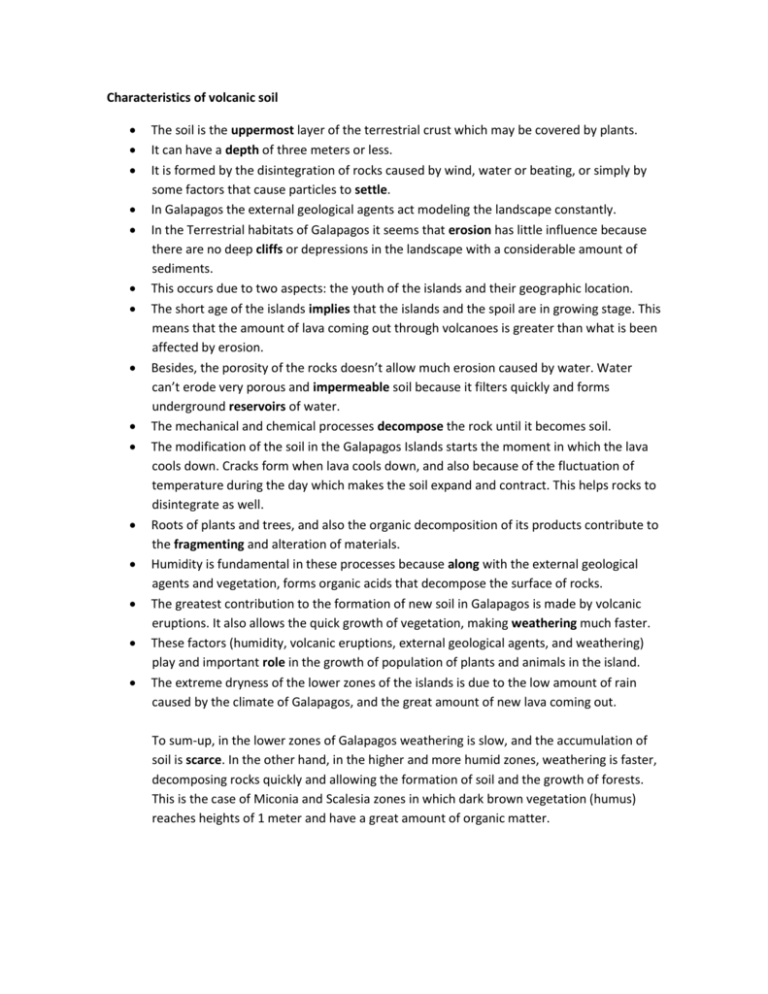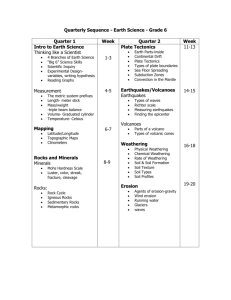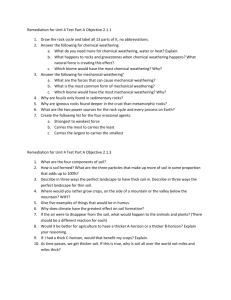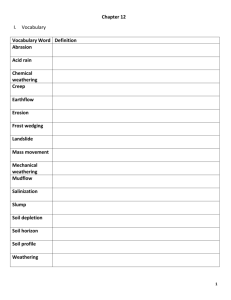Characteristics of volcanic soil The soil is the uppermost layer of the
advertisement

Characteristics of volcanic soil The soil is the uppermost layer of the terrestrial crust which may be covered by plants. It can have a depth of three meters or less. It is formed by the disintegration of rocks caused by wind, water or beating, or simply by some factors that cause particles to settle. In Galapagos the external geological agents act modeling the landscape constantly. In the Terrestrial habitats of Galapagos it seems that erosion has little influence because there are no deep cliffs or depressions in the landscape with a considerable amount of sediments. This occurs due to two aspects: the youth of the islands and their geographic location. The short age of the islands implies that the islands and the spoil are in growing stage. This means that the amount of lava coming out through volcanoes is greater than what is been affected by erosion. Besides, the porosity of the rocks doesn’t allow much erosion caused by water. Water can’t erode very porous and impermeable soil because it filters quickly and forms underground reservoirs of water. The mechanical and chemical processes decompose the rock until it becomes soil. The modification of the soil in the Galapagos Islands starts the moment in which the lava cools down. Cracks form when lava cools down, and also because of the fluctuation of temperature during the day which makes the soil expand and contract. This helps rocks to disintegrate as well. Roots of plants and trees, and also the organic decomposition of its products contribute to the fragmenting and alteration of materials. Humidity is fundamental in these processes because along with the external geological agents and vegetation, forms organic acids that decompose the surface of rocks. The greatest contribution to the formation of new soil in Galapagos is made by volcanic eruptions. It also allows the quick growth of vegetation, making weathering much faster. These factors (humidity, volcanic eruptions, external geological agents, and weathering) play and important role in the growth of population of plants and animals in the island. The extreme dryness of the lower zones of the islands is due to the low amount of rain caused by the climate of Galapagos, and the great amount of new lava coming out. To sum-up, in the lower zones of Galapagos weathering is slow, and the accumulation of soil is scarce. In the other hand, in the higher and more humid zones, weathering is faster, decomposing rocks quickly and allowing the formation of soil and the growth of forests. This is the case of Miconia and Scalesia zones in which dark brown vegetation (humus) reaches heights of 1 meter and have a great amount of organic matter.






